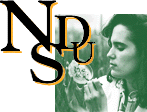 |
|
|
|
A Key to the superfamilies of the Lepidoptera
The following should serve as a key to the superfamilies and guide to the families of Lepidoptera occurring in North America. This key is not perfect. However, in those areas where identification is most difficult– families of the Gelechioidea, accurate assignment of a given moth to the correct family requires dissection, clearing and mounting of abdominal structures or a specialist; see Hodges (in Kristiensen 1999). In the key below, numbers of species within families occurring on a world wide basis are estimates from Kristensen (1999). Numbers for North America are from Hodges et al. 1983 and recent revisions. The number of species occurring from the Dakotas is only definitively known for a few groups. However, based upon available data, one fifth of the species found in North America provides a good estimate. In using this fraction, smaller families are overestimated and larger families are underestimated. Rare families, or those not commonly encountered by non-lepidopterists are followed by an asterisk (*).
| ||||||||||||||||||||
|
Last updated:
06/20/07
|